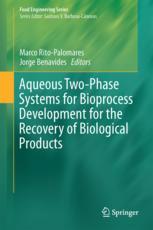

Most ebook files are in PDF format, so you can easily read them using various software such as Foxit Reader or directly on the Google Chrome browser.
Some ebook files are released by publishers in other formats such as .awz, .mobi, .epub, .fb2, etc. You may need to install specific software to read these formats on mobile/PC, such as Calibre.
Please read the tutorial at this link: https://ebookbell.com/faq
We offer FREE conversion to the popular formats you request; however, this may take some time. Therefore, right after payment, please email us, and we will try to provide the service as quickly as possible.
For some exceptional file formats or broken links (if any), please refrain from opening any disputes. Instead, email us first, and we will try to assist within a maximum of 6 hours.
EbookBell Team

0.0
0 reviewsThis comprehensive and unique text presents a full overview of downstream processing useful for those new to the concept as well as professionals with experience in the area. The history and theoretical principles of Aqueous Two-Phase Systems (ATPS) are covered in depth. Information on ATPS characterization and application is included, and ATPS equilibria and system parameters that have significant effect on partition behavior are studied.
Aqueous Two-Phase Systems for Bioprocess Development for the Recovery of Biological Products addresses specific applications of ATPS for the recovery and partial purification of high molecular weight compounds such as proteins, nucleic acids and polysaccharides, particulate bioproducts such as cells and organelles and low molecular weight compounds. Non-conventional strategies involving ATPS such as affinity systems, continuous liquid-liquid fractionation stages and the recovery from plant extracts are presented. Economic analysis of the application of ATPS in comparison to other fractionation techniques, particularly liquid chromatography, is considered, as are opportunity and current trends in the ATPS research area.
Each chapter utilizes the contributors' experimental expertise in traditional and non-conventional ATPS strategies, as well as analysis of areas of opportunity and perspectives on the development and future applications of ATPS in both the lab and larger scale operations. The result is a thorough and singular overview of ATPS which has not been matched by any other text on the market.